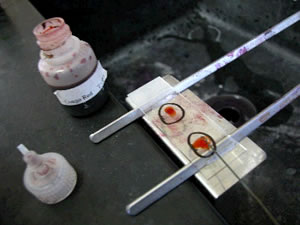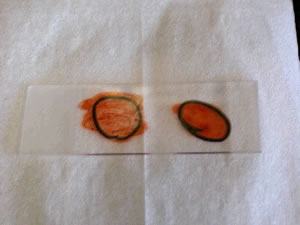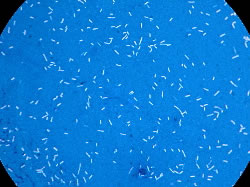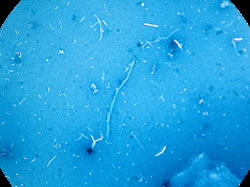THE VIRTUAL EDGE: Lab 2 Bacterial Staining Techniques I |
|
Negative StainIn contrast to direct stains that bind to bacteria directly, a negative stain colors the background of a smear rather than the bacteria. These stains have negatively charged functional groups so they can't bind directly to negatively charged bacteria. The advantages of negative staining are:
However, negative staining does not differentiate bacteria, one can only determine morphology. Procedure:
|
|
| Lab 2 / Smear Preparation / Direct Stain / Negative Stain / Oil Immersion Procedure / Terms & Definitions / Lab 2 Organisms Please take a few minutes to fill out a brief survey about your experience using the Virtual Edge: https://docs.google.com/forms/d/1yGbkF0KM92WBSk-IgS-EkjxkTKTQwhzuXmDsVpwRDoU/viewform Please email comments/problems to cboggs@uwyo.edu |
|
Rachel Watson, M.S. |
|

The Virtual Edge by http://www.uwyo.edu/virtual_edge/ is licensed under a Creative Commons Attribution-Noncommercial-Share Alike 3.0 United States License





